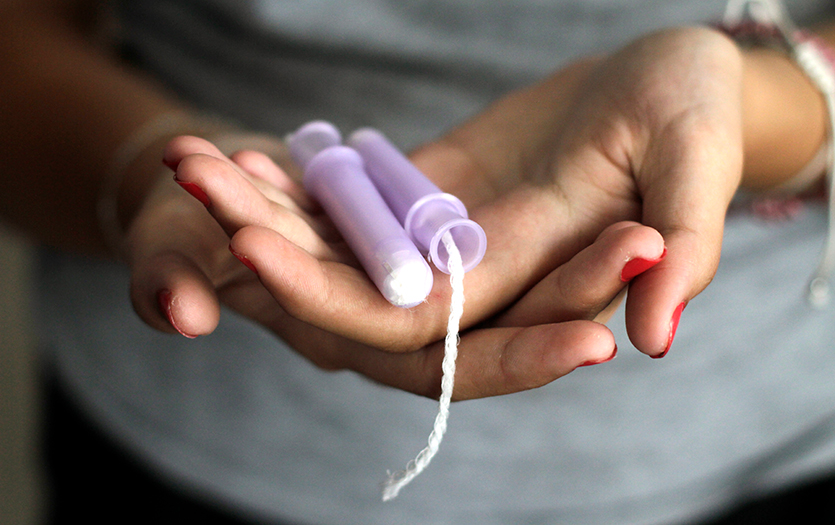
This post was written by Amy Austin, MD, PPG - OB/GYN.
A recent study was published demonstrating the presence of heavy metals in tampons, making headlines across platforms. The report, the first of its kind, raises concerns for exposure in women who use them. In this post, I’ll share what we know from the data and some general safety guidance going forward.
What are heavy metals?
Heavy metals are naturally occurring in small doses in the environment, and are known to be toxic to humans. The researchers tested for 16 metals:
- arsenic
- barium
- calcium
- cadmium
- cobalt
- chromium
- copper
- iron
- mercury
- manganese
- nickel
- lead
- selenium
- strontium
- vanadium
- zinc
The risks
The negative health effects from excessive exposure are broad, but include damage to the following systems in the body:
- cardiovascular (heart)
- nervous (brain and nerves)
- endocrine (hormone)
- hepatic (liver)
- renal (kidney)
Excessive heavy metal exposure has been linked to dementia and some cancers.
If exposed in utero (during pregnancy), heavy metals exposure can contribute to abnormal fetal development. And although tampons would not typically be used during pregnancy, heavy metal toxicity can linger for months or years.
What the research showed
Unfortunately, the authors found heavy metals in all samples tested, including name brand, generic, organic and inorganic tampon products. They even went so far as to test samples from both the UK and USA; this does not appear to be an isolated problem.
What this means for you
Before you toss out all your tampons, the threat might not be as significant as headlines indicate.
Tampons are composed of composite (mixed) materials such as cotton, rayon, viscous, and plastic or cardboard introducers. Heavy metals can be found in any component, and they did test all the components of the tampon that would touch the body. Those materials can be contaminated anywhere along the production pathway, from the moment the cotton seed sprouts until the package is sealed and shipped.
Environmental exposure (pesticides, contaminated water, proximity to a source of heavy metal in the region, etc.) during growth may contaminate some of the natural components later used to make the tampons. Others may be added during the manufacturing process, such as bleaching agents, lubricants, odor neutralizers and antibacterial agents. The latter are considered safe but still show up as heavy metals during testing.
As with most new discoveries, it’s hard to know if immediate changes are necessary. We know that the vagina can absorb some medications and toxins into the body. However, in this study, they did not test to see if women who use tampons have higher concentrations of any of the heavy metals. They only tested the tampons.
There are no studies in humans to test if heavy metals can be absorbed through the vagina. Most of the heavy metals tested are present in the environment in small amounts. Some of the heavy metals tested are even considered part of a healthy diet (I’m looking at you, calcium and iron!) or can be obtained over the counter (zinc is present in many cold remedies, for example). Even arsenic is normally found (in trace amounts) naturally in food. There are chemicals in almost everything we buy and eat.
All this to say, at this time, tampons are still generally considered safe for use.
Precautions
Again, tampons are still generally considered safe for use. Some due diligence when selecting your product can help.
First, try to choose products without dyes, perfumes or plastic inserters. This will reduce your exposure to chemicals as well as reduce waste.
There are also other products that can be used instead of tampons. Pads are made of similar materials but are not placed inside the body, which would reduce exposure. The menstrual cup (made of silicone, latex, thermoplastic elastomers or natural rubber) comes in many sizes and is also very environmentally friendly.
For those who use tampons, as always, remember to use them safely:
- Wash your hands before and after inserting a tampon.
- Change your tampon regularly, at least every 4 to 6 hours. Leaving a tampon in for too long puts you at higher risk for toxic shock syndrome. Do not wear a tampon to sleep overnight.
- Choose a tampon with the lowest absorbency possible for your level of flow. This will make removal easier and more comfortable.
- Dispose of tampons in the trash. Never flush a tampon down the toilet.
- If you notice pain, fever, rash, fainting, severe headache or other unusual symptoms after using a tampon, contact your healthcare provider.



